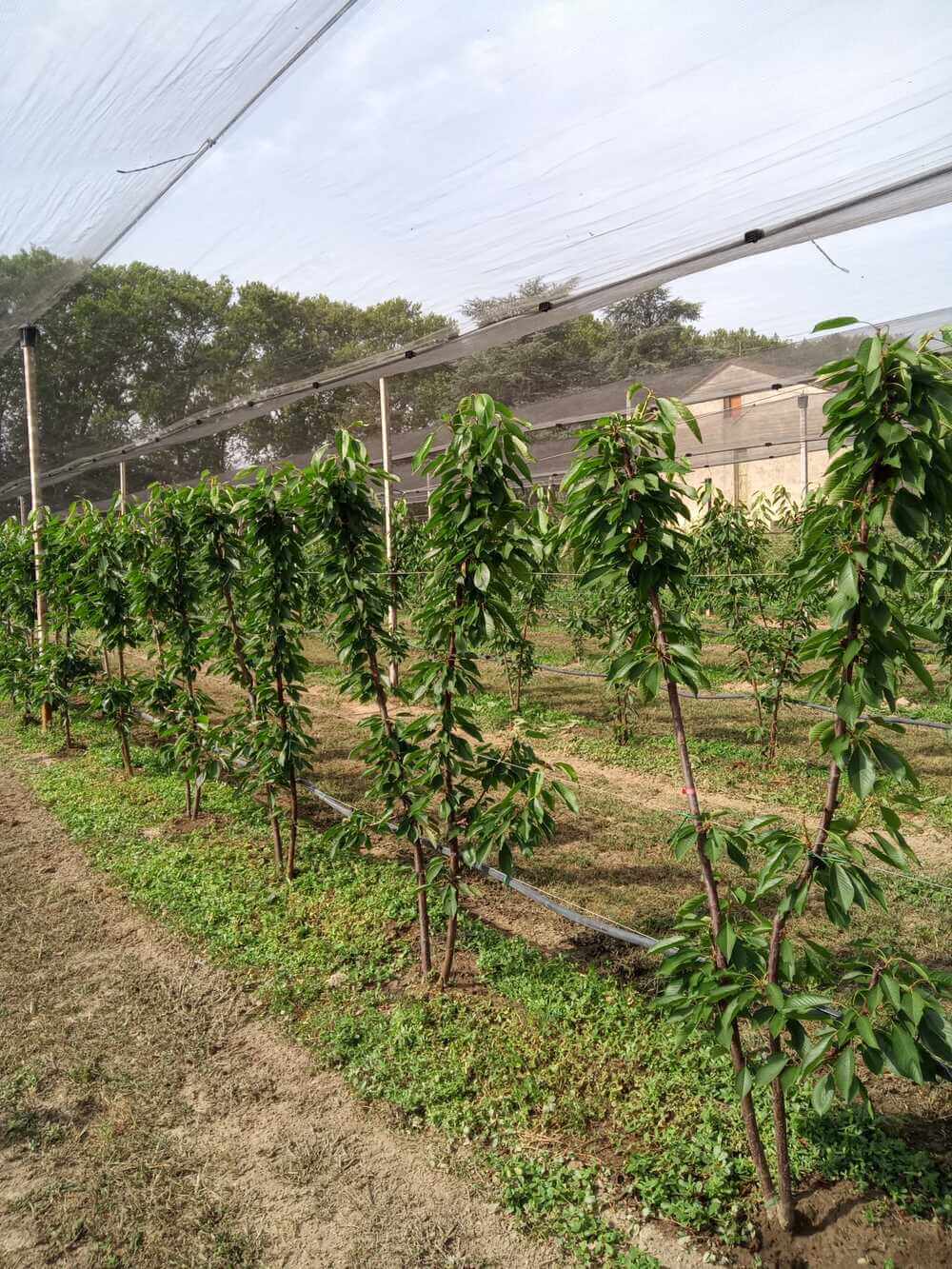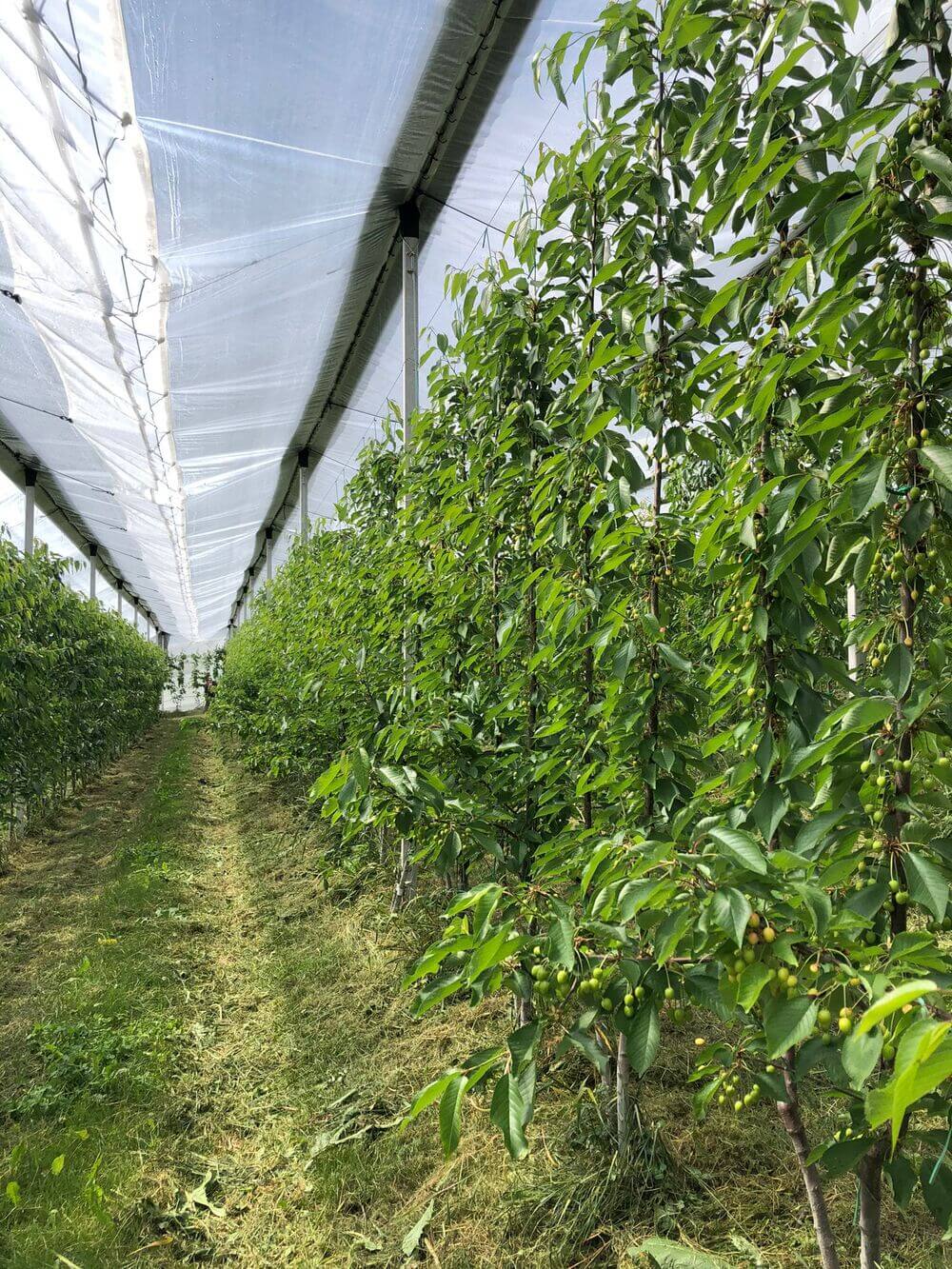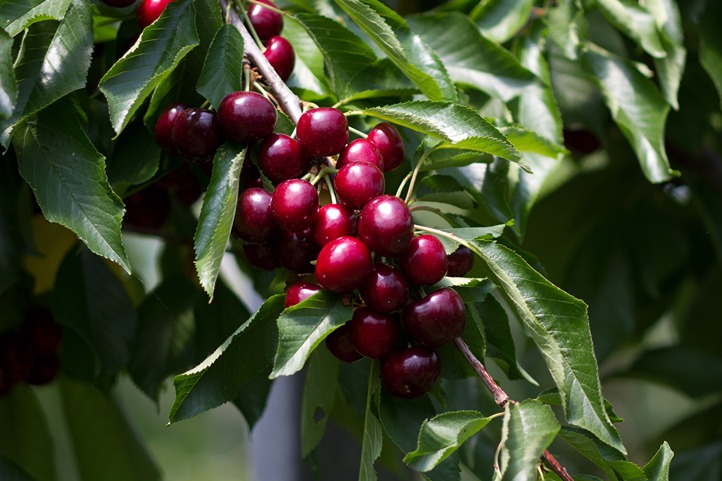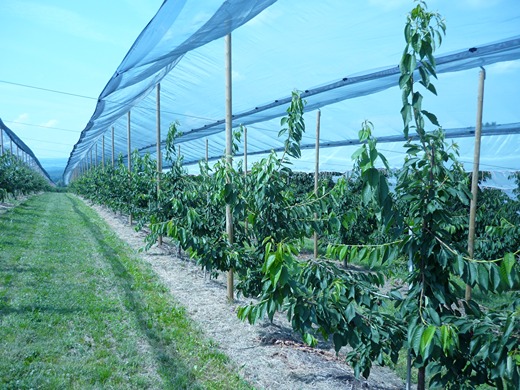Rain, violent, abundant and sudden, heat waves with very high temperatures, recurring droughts: the scenario in which cherry growers find themselves is becoming more difficult every year. The climate crisis is intensifying. Sweet cherry cultivation is growing worldwide, according to FAO data, between 2016 and 2021 (latest available data), cultivated hectares increased from 419,687 to 451,064, but the fruit grower who is thinking of planting a new cherry orchard must make careful choices.
Vivai Mazzoni, part of the Mazzoni Group, a company that has been active in the agri-food industry for more than 50 years, is convinced that the Bibaum® system can help to cope with such a challenging climate scenario. The system, patented by Mazzoni itself, allows the creation, directly in the nursery, of a pre-formed double-axis plant to be raised on the wall.
Bibaum®, more resilient cherry orchard
According to Vivai Mazzoni, there are several advantages with respect to the climate change issue. "We believe," said Giulio Corazza, the company's sales technician, who has been following the nursery's plants at 360° for years, from production to after-sales, and who over the years has seen countless hectares of wall-bred Bibaum® plants go into production, "that a Bibaum® rootstock can help us cope with increasingly extreme climatic conditions".
One possible solution today is the use of rootstocks that are more resistant to the challenging environmental conditions. Bibaum® plants boast easier vigour management thanks to the double axis and more rustic and resilient rootstocks can be used.
This is not the only advantage: in wall orchards, compared to traditional orchards, localised irrigation systems can be opted for in terms of volume, so water volumes can be considerably reduced for the same surface area. We know how water is increasingly a precious and scarce resource. The installation and use of rain and insect cover systems are then simplified and this helps to deal with the increasingly frequent problem of cracking in cherry farming.
 Image 1: Bibaum®
Image 1: Bibaum®
MaxMa® and Gisela® 5 or 6, allies for Bibaum®
The rootstocks usually used for Bibaum® plants, a system that Vivai Mazzoni began experimenting with in the 1990s on pome fruit trees and which already has 12 years of history on cherry trees, are Gisela® 5 or 6, but MaxMa® 14 (seedling) is becoming more widespread: "MaxMa® 14 rootstock has not yet developed as much as Gisela®," Giulio Corazza told us, "but combined with Bibaum® it makes it easier to manage vigour.
More rustic rootstocks have a greater trophic capacity, are more capable of sucking up water and nutrients than less vigorous rootstocks, reach greater depths and withstand high temperatures. The root system is much deeper and more articulated, which also helps in the event of sudden, heavy rainfall when it comes to cracking.
MaxMa® is less demanding in terms of nutrients and irrigation and this is not an aspect to be underestimated, you can't always have these inputs available, moreover using less fertilisers also helps economically, costs decrease".
The Emilia-based company is working precisely in the direction of experimenting with new rootstocks to counteract the problems that the climate crisis implies: 'We are always looking for something new and improving. We have just started a collaboration with Michigan State University, we are testing 8 different rootstocks that could be very interesting for European areas in the next few years," Giulio Corazza adds.
 Image 2: Bibaum®
Image 2: Bibaum®
Lowering costs with Bibaum®
As far as planting distances are concerned, they obviously vary depending on various factors, soil fertility, rootstock, variety grown, but Vivai Mazzoni usually recommends, when Gisela® 5 or 6 rootstocks are used, a distance between plants of 1.5-1.6 metres (distance between axes 0.75-0.80) and 3.5-3.8 metres between rows.
For planting on MaxMa® 14 rootstock, Vivai Mazzoni suggests a plant spacing of 1.6-2 metres (axle spacing 0.8-1) and 3.8-4.2 metres between rows. "The wider planting layout compared to, for example, a Fusetto allows the number of drippers per hectare to be reduced. Also, at root level, there is less competition for water and nutrients. Water is also saved at the time of treatments.
A Bibaum® plant is less vigorous, we therefore have less leaf area to treat and the products used are more effective, they hit the ground more easily. As well as saving money, there is therefore also an environmental benefit. The advantages of Bibaum® from a cost point of view are many: fewer plants per hectare means less initial investment while maintaining a high yield because we have two axes.
Planting costs are cut by up to 20%. The plants are uniform, homogenous, all the same on two axes and this means that up to 3 hectares per day can be pruned with a mechanical pruner, with one operator and one tractor.
Thanks to the uniformity, harvesting operations are also made easier. The fact that the cherries intercept more light in a more uniform manner leads to higher fruit quality, both in terms of size and organoleptic quality. Bibaum® then allows production to start a year earlier than with traditional systems and this obviously leads to a faster return on investment.
Vivai Mazzoni expands variety offering on cherries
On the subject of varieties: "Initially, the Bibaum® system was combined with Kordia or Regina, which are suitable for late varieties,' Corazza continued, 'but four years ago we acquired multiplication licences for a number of varieties from different breeding programmes, expanding the offer with medium and early varieties such as Areko(PBR), Royal Helen(cov), Royal Lafayette(PBR), Nimba(cov), Pacific Red(cov) and others.
In general, all varieties produced have been selected for their quality and production characteristics, allowing us to offer what we consider to be the best variety for each harvest time and including a harvest calendar of more than one month".
Barbara Righini
Images: Vivai Mazzoni
Cherry Times - All rights reserved














